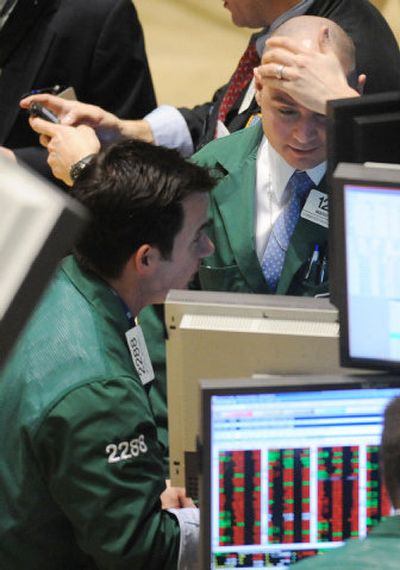Emergency funds from Feds rescue Bear Sterns

WASHINGTON – The Federal Reserve took the extraordinary step Friday of providing emergency funding to one of Wall Street’s venerable firms, Bear Stearns, after it ran out of cash to repay its lenders.
The Fed used a little-known power it last exercised in the 1960s to stem a run on Bear Stearns that could have sent multibillion-dollar losses cascading across the world financial system, causing more failures on Wall Street and threatening to choke off global economic growth.
The Fed’s action, arranged in a series of predawn deliberations Friday, is one of the most significant government efforts to save a private firm in modern times.
Critics characterized the Fed’s move as a bailout that inappropriately intrudes on the free market and could lead banks to keep taking risks like those that imperiled Bear Stearns. Other analysts said the action was necessary, given the precarious state of world financial markets.
“We’re on a knife’s edge,” said Eugene White, an economics professor at Rutgers University who studies financial crises. “The danger is if people’s confidence is lost in a place like Bear Stearns, no one will lend to anybody.”
Markets tumbled in the hours after the funding plan was announced, with the Dow Jones industrial average finishing the day down 1.60 percent, or nearly 195 points.
Bear Stearns’ stock fell more than 47 percent.
As Bear’s troubles deepened in recent months, it increasingly turned to overnight loans. But on Wednesday and Thursday, its lenders lost faith, and many refused to lend it any more money. That set off a frantic search for cash, including negotiations between executives of Bear and other Wall Street titans.
In the middle of the night, Bear and J.P. Morgan struck a deal. Bear would be willing to put up some of its assets as collateral in exchange for cash from the Fed. The transaction would be routed through J.P. Morgan, which, as a commercial bank, has access to the Fed’s discount window. That would give Bear time to raise financing through the private sector.
“What this is is a bridge to more-permanent solutions,” Bear Stearns chief executive Alan Schwartz said during a conference call Friday afternoon.
But the deal still needed the Fed’s approval. In a series of conference calls from about 3 till 7 a.m., leaders of the central bank discussed whether to exercise an authority granted the Fed in the 1930s – and not used in four decades – to approve the loan.
Fed Chairman Ben S. Bernanke, Vice Chairman Donald L. Kohn, New York Fed President Timothy F. Geithner and Fed Governor Kevin M. Warsh conferred in those early-morning hours on calls, which also included Treasury Secretary Henry M. Paulson Jr. and Undersecretary Robert K. Steel. The Treasury Department had no formal role in the plan, but Fed leaders consulted Paulson and Steel for their expertise and to get their support.
If they allowed Bear to fail, it could drag the rest of Wall Street with it. A major financial institution would have gone from being worth $8 billion to worthless, literally overnight.
In normal times, they would be inclined to let capitalism do its work. But markets are so jittery that the policy-makers concluded investors would refuse to make short-term loans to the other big Wall Street banks that rely on such debt, driving them under, too. The stock market could have experienced a collapse of 1987 proportions, and untold damage may have been done to the wider U.S. economy.
They weighed those fears against the fact that making the loan would put government money at risk. The New York Fed will accept collateral from Bear – long-term investments viewed as safe – in exchange for the short-term loan. In theory, that should protect the government against losses. But if the value of the collateral drops, the Fed could end up losing money.
And Fed officials worried about “moral hazard,” the notion that other companies might behave irresponsibly if they think they too could get government help if times turn bad.
The Fed’s board of governors voted 4-0 in favor of the loan at around 9 a.m. (The fifth Fed governor, Frederic S. Mishkin, was traveling.)
Some analysts said the Fed’s effort, coupled with two major actions in the past week to restore order to credit markets, has undermined its credibility.
“There is a growing sense in the market that the Fed is becoming increasingly inept or unable to really do much about this situation,” said James Paulsen, chief investment strategist at Wells Capital Management.
Federal securities regulators and the U.S. attorney in Brooklyn are investigating what Bear executives told investors about the health of its hedge funds in a pivotal April 25 conference call.